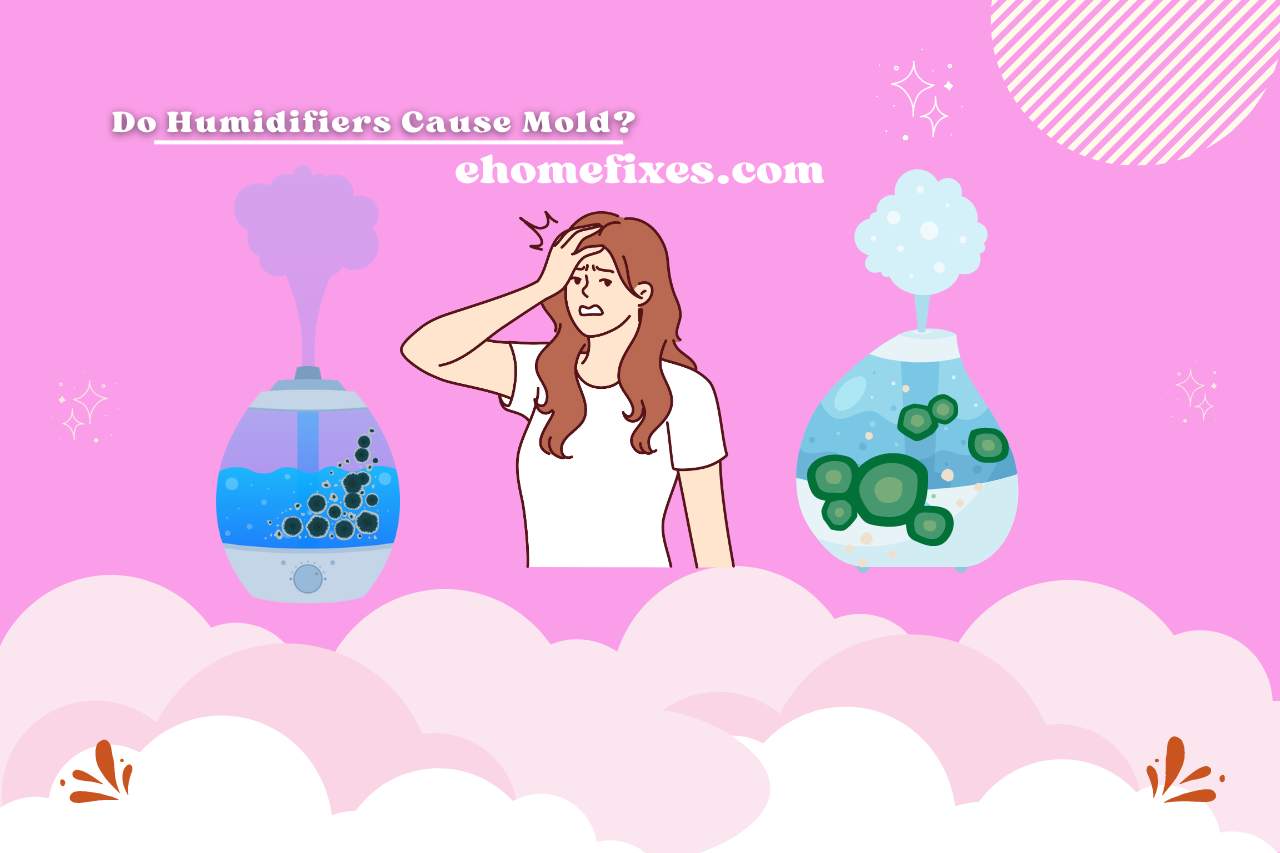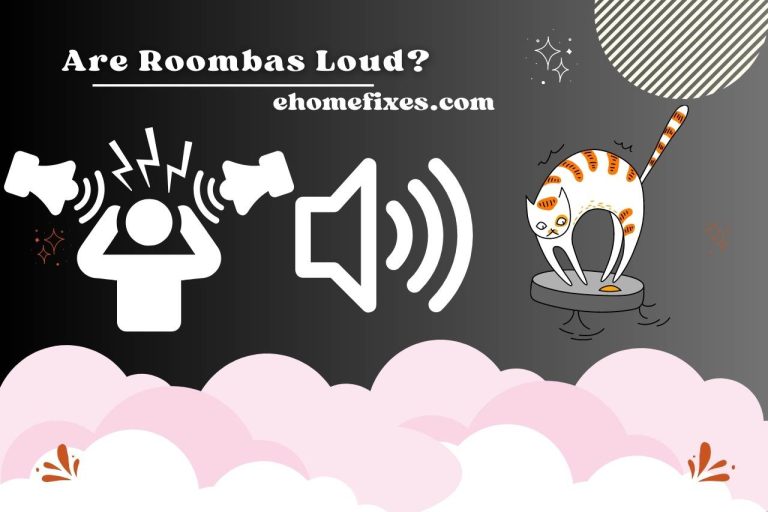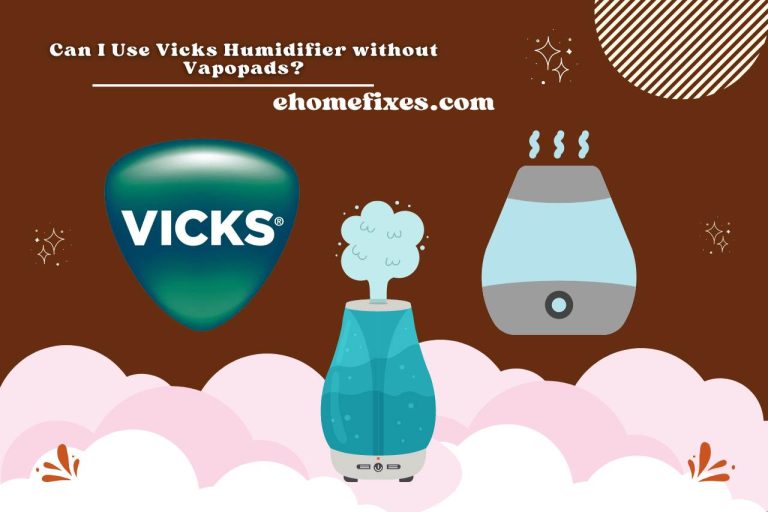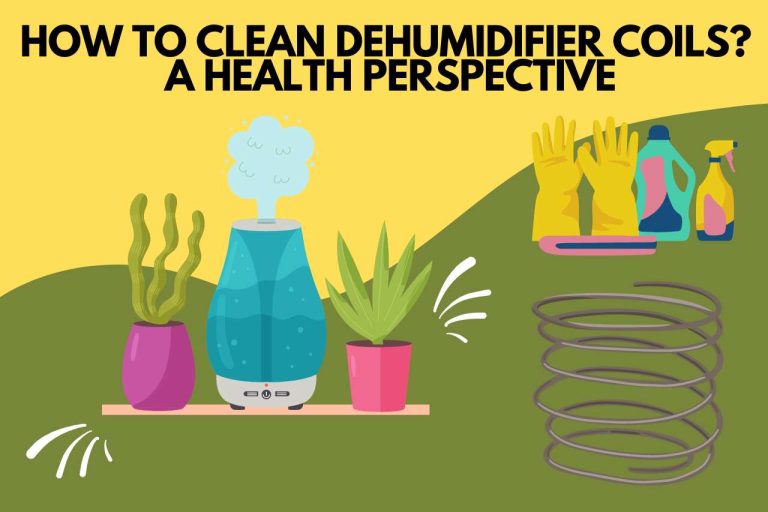Do Humidifiers Cause Mold? Separating Myth from Reality!
Humidifiers are widely used for maintaining comfortable indoor humidity levels, benefiting our health and well-being. However, concerns arise about whether humidifiers can unintentionally trigger mold growth in our living spaces. This article aims to provide clear insights into the relationship between humidifiers and mold, debunking myths, and offering accurate information.
Understanding the factors that influence mold growth when using humidifiers is crucial for safe and effective usage. We’ll explore the impact of humidity levels, maintenance practices, and the choice of humidifier type to prevent mold issues while enjoying the benefits of proper humidification. Join us as we delve into the science behind humidifiers and mold, fostering a healthier and cozier indoor environment.
How Do Humidifiers Work?
Humidifiers do a fantastic job of adding moisture to the air, making indoor spaces more comfortable and healthier. These devices consist of three main parts: a water reservoir, a wick or filter, and a fan.
The process is straightforward—water from the reservoir is drawn up through the wick or filter, and when the fan blows air over it, the water turns into a fine mist. As soon as mist is released, the humidity in the room goes up.
Some humidifiers even provide the option of warm mist by using a heating element. Depending on your preference, you can choose from cool mist, warm mist, or ultrasonic humidifiers
Do Humidifiers Cause Mold?
Yes, humidifiers can cause mold growth if not used and maintained properly. While the humidifiers themselves aren’t the direct culprits, they create conditions that favor mold development.
Humidifiers are excellent for increasing indoor humidity in dry environments, but excessive moisture can lead to mold on surfaces. To avoid this, follow responsible practices and regular maintenance.
Ensure to clean and disinfect the humidifier as per the manufacturer’s guidelines. To prevent mineral buildup, use distilled or demineralized water. You can keep a safe humidity level with a hygrometer.
With these precautions, you won’t have to worry about mold problems in your house when you use a humidifier.
Are High Humidity Levels Linked to Mold Growth?
Yes, high humidity levels are indeed linked to mold growth, creating a favorable environment for mold to thrive indoors. Mold loves moisture, and when humidity levels surpass 60%, it becomes more susceptible to development and spread.
When the air is filled with excess moisture, it settles on surfaces like walls, ceilings, and furniture. Poor ventilation further traps this moisture, providing an ideal breeding ground for mold spores to take hold and proliferate rapidly.
To prevent mold issues, it’s crucial to maintain indoor humidity within the recommended range of 30-50%. Using a dehumidifier helps regulate humidity in areas prone to excessive moisture, such as bathrooms and basements. Adequate ventilation, like using exhaust fans and opening windows, aids in reducing humidity levels and thwarting mold growth.
Make sure you check your living space for mold or water damage on a regular basis. To get rid of mold safely and thoroughly, call a professional.
Maintain a healthy and mold-free living environment by controlling indoor humidity and taking proactive measures.
Can Mold Lead to Health Problems?
Absolutely! Exposure to mold can indeed cause various health issues, especially for individuals sensitive or allergic to mold spores. When mold grows indoors, it releases tiny spores into the air, which can be inhaled into the respiratory system.
People with mold allergies can get sneezing, coughing, itchy eyes, and skin irritation from mold spores. The symptoms of asthma can get worse, including wheezing and shortness of breath.
Moreover, certain molds produce mycotoxins, which are harmful substances that can cause serious health problems if consumed, inhaled, or touched.
Long-term exposure to mold can result in chronic health issues, such as respiratory infections and even the development of asthma in previously unaffected individuals.
Your health depends on addressing mold problems in your living space as soon as possible. To get rid of mold safely and thoroughly, call a professional mold remediation service. Furthermore, reduce humidity levels and improve ventilation to prevent mold growth.
How to Prevent Mold Growth with Humidifiers?
To keep your humidifier from contributing to mold growth, follow these easy steps. Monitoring indoor humidity levels is crucial; aim to maintain them between 30% to 50% using a hygrometer. This ensures an environment that discourages mold from thriving.
Regularly clean and disinfect your humidifier following the manufacturer’s instructions. This prevents mold and bacteria buildup in the water reservoir and filter, ensuring clean and safe air dispersal.
Always use clean and distilled water in your humidifier to avoid introducing minerals from tap water that can promote mold growth.
Proper ventilation is essential for reducing moisture buildup in your home. Consider using exhaust fans in bathrooms and kitchens and opening windows to improve airflow and decrease humidity.
Limit the use of your humidifier, especially during periods of high humidity or when the air feels sufficiently moist. This prevents excessive moisture levels that can lead to mold issues.
Taking these simple preventive measures will keep your humidifier from growing mold, making your home healthier and more comfortable.
Are There Mold-Resistant Humidifiers Available?
Yes, mold-resistant humidifiers are available in the market. These specialized devices are designed with materials that inhibit mold growth.
They often include antimicrobial properties in the water tank and wick/filter, preventing mold and bacteria from thriving.
Some models also have self-cleaning features, reducing the need for frequent manual cleaning.
When choosing a humidifier, look for mold-resistant options with easy maintenance and built-in antimicrobial technology for a healthier indoor environment without mold worries.
Can Proper Humidifier Maintenance Reduce Mold Risk?
Your home’s humidifier can reduce mold growth significantly if you maintain it properly.
Keeping your humidifier clean and disinfected according to the manufacturer’s instructions keeps mold and bacteria away.
Make sure your water tank is emptied and refilled every day, and use distilled or demineralized water to reduce mineral deposits.
If you follow these maintenance steps, you won’t have to worry about mold issues. It makes your home a healthier and more comfortable place to live.
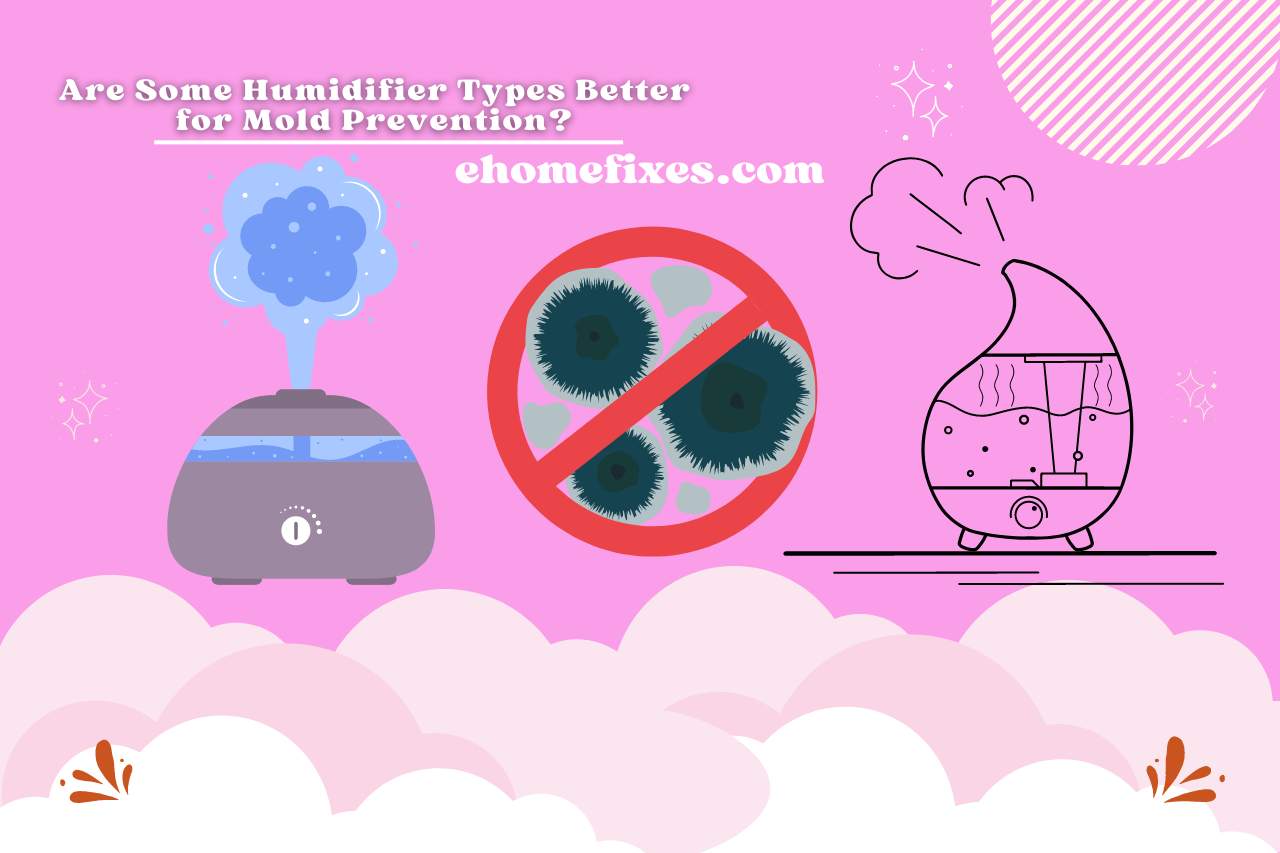
Are Some Humidifier Types Better for Mold Prevention?
If you’re worried about mold growth in your home, investing in a humidifier can help. However, not all humidifiers are equally effective in preventing mold.
Ultrasonic and cool mist humidifiers are considered the best types for mold prevention. They release a fine mist into the air without producing heat, making them ideal for damp areas like bathrooms and basements.
Warm mist humidifiers, on the other hand, can create an environment that encourages mold growth if not maintained properly.
Consider investing in an ultrasonic or cool mist humidifier if you want to keep the air in your home healthy and mold-free.
Can Humidifiers be Used Safely in Mold-Prone Areas?
Absolutely! Using a humidifier safely in mold-prone areas is possible. Opt for an ultrasonic or cool mist humidifier that doesn’t generate heat.
These types release a fine mist, preventing excess moisture and mold growth. It’s essential to maintain humidity below 60% and clean the humidifier regularly.
Use distilled water and follow the manufacturer’s instructions for cleaning and disinfecting. By following these simple steps, you can safely enjoy the benefits of a humidifier in mold-prone areas, maintaining a comfortable and healthy indoor environment. Keep in mind the importance of prevention and proper care to ensure a mold-free space
What to Do If Mold Develops in Your Humidifier?
If you notice mold developing in your humidifier, it’s vital to take immediate action. Start by turning off and unplugging the device to prevent the mold from spreading.
Carefully disassemble the humidifier following the manufacturer’s instructions and clean all parts using a mild detergent mixed with water.
Make sure to scrub away any visible mold using a soft brush or cloth. Thoroughly rinse and completely dry all parts before reassembling the humidifier.
You can get rid of remaining mold spores by running vinegar through the device. Keep your humidifier clean and maintained to prevent mold growth.
How to Choose a Humidifier for Mold Prevention?
When choosing a humidifier to prevent mold, consider these important factors. Opt for an ultrasonic or cool mist humidifier, as they discourage mold growth.
Look for models with built-in humidistats or hygrometers to keep humidity below 60%, the ideal level. Maintenance shouldn’t be a hassle, so go for humidifiers with removable water tanks for easy cleaning and refilling.
Using distilled or demineralized water will prevent mineral buildup and mold. Lastly, prioritize humidifiers with reliable filtration systems to keep impurities in check.
By considering these factors, you’ll find a humidifier that effectively prevents mold and maintains indoor air quality
FAQ
Can Humidifiers Improve Indoor Air Quality?
Yes, humidifiers can improve indoor air quality. They add moisture to dry air, reducing the risk of respiratory issues caused by dryness.
Proper humidity levels can alleviate dry skin, irritated nasal passages, and throat discomfort.
However, it’s essential to maintain humidity between 30% to 50% to avoid excess moisture that could lead to mold growth.
Keeping your humidifier clean and maintained is crucial to keeping your air healthy.
Do Humidifiers Increase Humidity Levels?
Yes, humidifiers do increase humidity levels indoors. These devices add moisture to the air, benefiting dry environments or winter when the air is drier.
Raising humidity helps soothe dry skin, alleviate irritated throats, and reduce static electricity.
However, it’s crucial to use humidifiers responsibly and maintain humidity between 30% to 50% to avoid excessive moisture that may lead to mold growth. Proper use ensures a comfortable and healthy indoor environment.
Do Humidifiers Create Ideal Conditions for Mold Growth?
Yes, humidifiers can create ideal conditions for mold growth if not used and maintained properly.
While they add moisture to the air, excessive humidity levels above 50% can encourage mold to thrive on surfaces.
Mold and bacteria build up in humidifiers if they aren’t cleaned and maintained regularly.
Utilizing demineralized or distilled water also reduces mineral deposits that encourage mold growth. By taking these precautions, you may take advantage of a humidifier’s benefits without worrying about mold problems in your home.
You May Also Like
- Why does My Humidifier Smell? Unraveling the Mystery!
- Can I Use Vicks Humidifier without Vapopads? (No VapoPads? No Problem!)
- Does a Humidifier Increase Oxygen? Humidifiers and Air Quality!
- Can a Humidifier Set Off a Smoke Alarm? Debunking the Myth!
- How Long does It Take for a Humidifier to Work? Humidifier Efficiency!
- Humidifier Spitting Out Water – Here’s What You Can Do!

